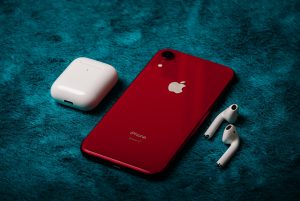Mobile Phone Reviews
Mobile phones have become an integral part of our daily lives, revolutionizing the way we communicate and access information. Also known as cell phones or smartphones, these portable devices offer a wide range of functions beyond traditional voice calls. Mobile phones allow us to send text messages, access the internet, take photos and videos, play games, listen to music, and much more. With advancements in technology, mobile phones have become more powerful, offering high-resolution displays, advanced cameras, and fast processors. They are no longer just communication tools but have transformed into multifunctional devices that keep us connected and entertained on the go.
Benefits of Mobile Phones
Mobile phones have brought about a communication revolution, enabling us to connect with others anytime, anywhere. The global connectivity offered by these devices has brought people from different parts of the world closer together. Mobile phones have become a crucial tool for accessing information, eliminating the limitations of time and location. With just a few clicks, we can gather knowledge on a wide range of topics and stay updated on current events.
In addition to information access, mobile phones have significantly improved productivity levels. These devices allow us to multitask, integrating work and personal tasks seamlessly. Communication is no longer limited to voice calls but also includes email, social media, and instant messaging platforms. This accessibility enables individuals to connect with colleagues, friends, and family without any constraints.
Moreover, mobile phones provide an immense level of convenience in our daily lives. From online shopping and banking to navigation and entertainment, these devices have become our assistants, simplifying tasks and making our lives easier. They serve as a one-stop solution for various needs, saving time and effort.
The benefits of mobile phones are vast. They have revolutionized communication, provided global connectivity, enhanced access to information, improved productivity, and added convenience to our everyday lives. These devices have undoubtedly become an essential part of modern society, empowering individuals and transforming the way we connect and interact with the world.
Wireless Charging
Wireless charging technology has revolutionized the way we keep our mobile phones powered up. Gone are the days of dealing with tangled cords and searching for the right charging cable. With wireless charging, all you have to do is place your phone on a charging pad or dock, and it automatically starts recharging. This convenient and hassle-free solution not only eliminates the need for cables but also makes it easier to charge your phone on the go. Whether you’re at home, in the office, or even at a public place like a café or airport, wireless charging pads are becoming increasingly common, providing a convenient and efficient way to keep your mobile phone powered and ready for use. Additionally, many modern smartphones are now equipped with wireless charging capabilities, offering yet another feature that enhances the overall user experience. As more and more mobile phone manufacturers integrate this technology into their devices, wireless charging is quickly becoming a must-have feature for many consumers.
Advantages of Wireless Charging Technology
Wireless charging technology offers numerous advantages for mobile phones. One of the key benefits is the convenience it provides. With wireless charging, users no longer have to fumble with cables and connectors to charge their phones. Instead, they can simply place their device on a charging pad or stand, and it will start charging automatically. This eliminates the hassle of dealing with tangled cables and makes charging a seamless and effortless experience.
Another advantage of wireless charging is the increased durability and longevity of the charging port. With traditional charging methods, the charging port is often subjected to wear and tear from frequent plugging and unplugging. This can lead to a loose or damaged port, which may require costly repairs. With wireless charging, there is no need to constantly insert and remove cables, reducing the strain on the charging port and increasing its lifespan.
Additionally, the absence of cables also eliminates the risk of cable damage, such as fraying or breakage. This further contributes to the overall durability of the device. Moreover, wireless charging allows for a clutter-free and organized charging environment, as there are no cables to clutter up the space or trip over.
Wireless charging technology offers the advantages of convenience, durability, and longevity. It simplifies the charging process, reduces wear and tear on the charging port, and eliminates the need for cables, making it a desirable feature for modern mobile phones.
Disadvantages of Wireless Charging Technology
While wireless charging technology offers numerous advantages, it is not without its limitations. One major drawback is the slower charging speed compared to traditional wired charging methods. Wireless charging typically takes longer to fully charge a device, which can be frustrating for users who need a quick battery boost on the go.
Another disadvantage is compatibility issues with certain devices. Not all smartphones or electronics support wireless charging, so users must ensure their device is compatible before investing in wireless charging accessories. This can be an inconvenience for those who own older or less common devices.
Limited mobility is another drawback of wireless charging. Unlike traditional chargers, which allow users to move freely while their device is plugged in, wireless chargers require proximity and alignment between the charging pad and the device. This can restrict mobility and limit the convenience of charging while using the device simultaneously.
Overheating risks are also a concern with wireless charging. Continuous charging can generate heat, and if not managed properly, it can lead to overheating, reducing the overall lifespan of the device.
Lastly, wireless charging requires specific charging pads or docks, which may need to be purchased separately. This additional cost can be a deterrent for some users, especially when compared to the universal availability and affordability of traditional chargers.
Flip Phone Design
Flip Phone Design is a nostalgic and unique approach to mobile phone design that offers a distinctive form factor and functionality. The flip phone design, which harkens back to the early days of mobile phones, features a hinge mechanism that allows the device to be folded in half. This not only provides a compact and pocket-friendly size when closed but also offers a larger and more immersive screen when opened. The clamshell design also offers protection for the screen when not in use and eliminates the need for a separate case or screen protector. Additionally, flip phones often include physical buttons, making it easier for users to navigate and input text compared to touchscreen-only devices. With their retro charm and practicality, flip phones continue to attract users who appreciate a combination of classic aesthetics and modern functionality.
Pros and Cons of Flip Phone Design
Flip phones have long been a popular choice for mobile phone users due to their unique design and features. Here are the pros and cons of flip phone design:
Pros:
1. Compact and portable: Flip phones are typically smaller and more lightweight than other phone designs, making them easy to carry in pockets or purses.
2. Screen protection: The flip cover provides added protection for the screen, reducing the risk of scratches or cracks.
3. Improved battery life: Flip phones often have a longer battery life compared to smartphones, thanks to their more basic features and smaller screens.
4. Enhanced privacy: When the phone is closed, the screen is hidden, ensuring privacy during conversations or when checking notifications in public.
Cons:
1. Limited features and functionality: Flip phones typically lack the advanced features found in smartphones, such as app support, high-quality cameras, and a wide range of connectivity options.
2. Smaller screens: The compact design of flip phones comes at the expense of screen size, which can make some tasks, such as web browsing or video viewing, less enjoyable.
3. Inconvenient for multitasking: Closing and opening the phone to access apps or features can be cumbersome and slower compared to the seamless experience offered by smartphones.
Despite the limitations, flip phones continue to appeal to those seeking a simpler and more compact mobile phone experience. They provide a sense of nostalgia and offer a unique alternative to traditional smartphone designs.
Advantages Over Other Phone Designs
Mobile phones offer several advantages over other phone designs that make them a popular choice among users. Firstly, mobile phones are incredibly versatile and offer a wide range of features and functionalities. They are not limited to just making calls and sending messages but also allow users to access the internet, run various applications, and perform tasks like taking photos and videos.
Another advantage of mobile phones is their larger screens compared to flip phones. With larger screens, users can enjoy a better viewing experience for activities like web browsing, video streaming, and gaming. Additionally, mobile phones often come with high-resolution displays that enhance the overall visual quality.
Mobile phones also offer seamless multitasking capabilities. Users can easily switch between multiple applications and tasks, thanks to the advanced software and hardware integration. This makes it convenient to handle work-related tasks, social media interactions, and entertainment activities all in one device.
Furthermore, mobile phones are highly customizable, allowing users to personalize their devices with various themes, wallpapers, and applications. They also often come with advanced security features like fingerprint sensors and facial recognition for enhanced privacy.
Mobile phones have numerous advantages over other phone designs. They offer a wide array of features and functionalities, larger screens, seamless multitasking capabilities, and customization options. These benefits make mobile phones a preferred choice for users seeking a versatile and convenient communication device.
Android Phones
Android phones have become increasingly popular in recent years due to their wide range of features and functionalities. With an extensive selection of models, Android phones cater to various needs and budgets. From budget-friendly options to high-end flagship devices, Android phones offer a diverse range of choices to suit every user. One of the key advantages of Android phones is their ability to offer seamless integration with the Google ecosystem, allowing users to effortlessly sync their contacts, emails, and documents across multiple devices. Additionally, Android phones provide users with access to millions of apps through the Google Play Store, enabling them to customize their device and enhance their functionality. Whether you’re a tech enthusiast or a casual user, Android phones offer a versatile and user-friendly experience that continues to evolve with each new release.
Popular Android Models and Brands Available Today
When it comes to popular Android models and brands available today, several stand out in the market. Samsung Galaxy is undoubtedly one of the leading brands, known for its wide range of smartphones. The latest releases include the Samsung Galaxy S23 Ultra, Samsung Galaxy A54, and Samsung Galaxy Z series. These phones offer features like wireless charging, dynamic displays, and excellent camera systems.
Google Pixel is another popular brand, known for its pure Android experience and impressive camera capabilities. The latest release, the Google Pixel 7, is highly anticipated for its software updates and advanced features.
Motorola Razr stands out for its unique foldable design and nostalgic flip phone concept. With its sleek and compact form factor, it offers a different take on smartphone technology.
For those on a budget, there are several options available. Many brands offer budget phones with decent features and performance, catering to price-conscious consumers.
On the other end of the spectrum, flagship phones offer the latest and most advanced technologies. These devices usually come with top-of-the-line specifications, excellent displays, powerful cameras, and larger batteries.
Popular Android models and brands available today include Samsung Galaxy, Google Pixel, and Motorola Razr. Buyers can choose from a range of budget phones and flagship devices depending on their preferences and requirements.
Pros and Cons of Android Phones Compared to Other Operating Systems
When it comes to operating systems, Android phones have their fair share of pros and cons compared to other platforms. One of the biggest advantages of Android phones is the extensive customization options they offer. Users can personalize their devices with various themes, launchers, and widgets, truly making their phones their own.
Another significant benefit of Android phones is their diverse app ecosystem. The Google Play Store boasts millions of applications, ranging from games to productivity tools. With such a vast selection, users have no shortage of options and can find apps that cater to their specific needs.
Additionally, Android phones are known for their compatibility with various devices. They can seamlessly integrate with smartwatches, fitness trackers, and other smart home devices, creating a connected ecosystem.
However, Android phones do have their drawbacks. One potential concern is the higher risk of security vulnerabilities. Due to the open nature of the Android platform, it can be more susceptible to malware and hacking attempts compared to closed ecosystems like iOS.
Furthermore, Android’s fragmentation issue presents a challenge. With multiple manufacturers and versions of the operating system, the availability of software updates may vary. Some devices may receive updates promptly, while others may lag, leading to disparities in features and security patches.
Android phones offer a wide range of customization options, a diverse app ecosystem, and compatibility with various devices. However, they also come with potential security vulnerabilities and fragmentation issues to consider. Ultimately, choosing an operating system boils down to personal preferences and priorities.
Conclusion
In conclusion, understanding the benefits of mobile phones, wireless charging, flip phone design, and the Android platform is crucial. These aspects contribute to users’ overall satisfaction and functionality in their day-to-day phone usage. By considering these factors, individuals can make informed decisions based on their specific needs and preferences.





